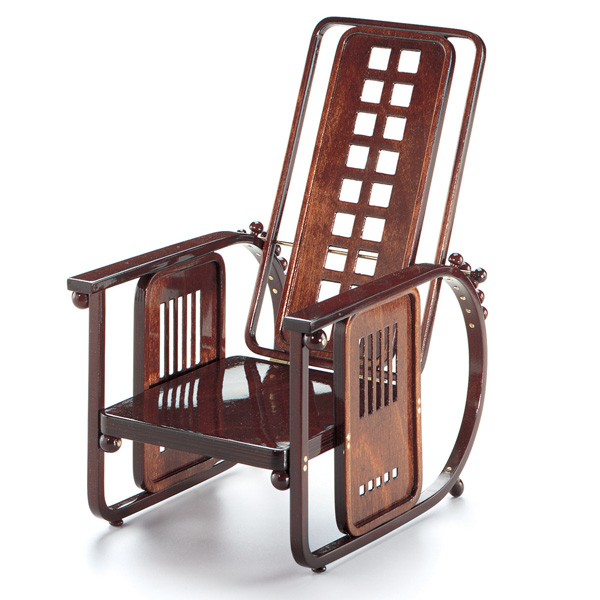Josef Hoffmann:
Was the founder of the Wiener Werkstätte in 1903. Josef Hoffmann was trained as an architect, but he made many different objects, including furniture. He is perhaps best remembered for his objects for the bent-wood industry. Most of these designs were designed to be mass produced. Some of his items are still in production today. His designs were considered very avant-garde for his time.

(Hoffmann, Sitzmaschine, 1905)
Koloman Moser:
Moser was a founding member of the Wiener Werkstätte, along with Josef Hoffmann. He designed many of the printed materials for the Werkstätte, and Hoffmann helped him to realize his 2D designs as 3-dimensional objects of furniture. He eventually left in 1906, amidst financial difficulties. He concluded that the work being created by the WW was too varied and differed greatly from commissioner to commissioner.

(Moser, Zebra Cabinet, 1904)
Dagobert Peche
Studied Architecture at the Academy of Fine Art, and after four years of freelancing, joined the Wiener Werkstätte. Dagobert joined the Wiener Werkstätte in 1915, during World War I. His work was more ornamental than the work of Moser and Hoffmann, because he came at a later time, when Viennese design was not quite as preoccupied with geometry.

(Peche, Cabinet)
No comments:
Post a Comment